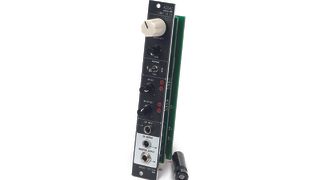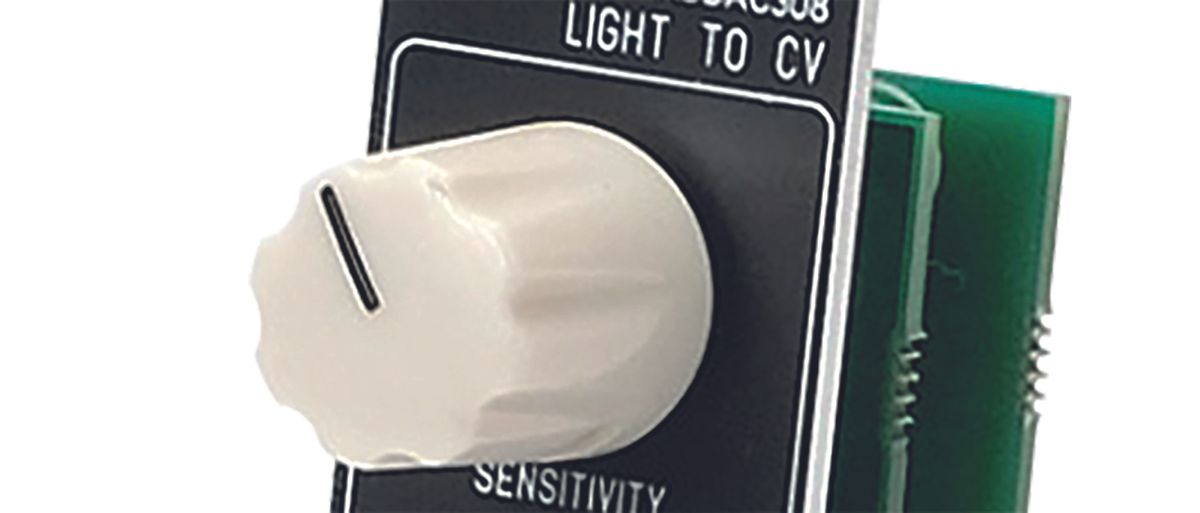MusicRadar Verdict
It may appear limited in use but the reality is very different. This is a typically solid and well thought out ADDAC module, with huge room for experimentation and rig control that’s rare to find in this market.
Pros
- +
Excellent modulation per hp.
- +
Great build quality.
- +
Simple to master.
Cons
- -
Results depend on user’s local lighting.
MusicRadar's got your back
ADDAC System 308: What is it?
Modulation modules come in so many varieties and flavours it can be hard to keep track, let alone decide what suits your style, or fits best with your existing rig. Most modular musicians have at least a couple of modulation sources but they’re very often fairly predictable and standard options. ADDAC has introduced the 308 which looks to change this, by using light as the input source for the change in cv, as opposed to LFOs and other more traditional methods.
Using light in modules isn’t a new thing but it’s usually used in a different way, say behind the panel in certain low-pass gates. The 308 ships with a light sensor that connects to the module using any standard patch cable, opening things up for lots of flexibility. The sensor gets patched into the tiny (at 4hp) but, typically of ADDAC, module. The 308 is 4.5cm deep so should be a good fit for most rigs.
The front panel is simple but powerful, dominated by a large sensitivity knob. This has a large range but seeing as light itself comes in such a huge range of strengths, this is ideal. There is also a three-way response toggle, which determines how fast the CVs react to changes in light captured by the sensor, with settings for medium, fast and slow. At first, we were confused that fast is the centre setting but after tinkering more it makes sense, as we think that will be the most commonly used setting.
The ADDAC 308 has two output channels. The first increases the control voltage when more light hits the sensor, while the second is inverted, making this more versatile than if it has been two of the same with a simple inversion switch. There are attenuators for each channel, which act on the outgoing voltage, so you can dial in precise amounts of cv without needing an extra module.

ADDAC System 308: Performance and verdict
In use, the module takes a little experimentation to learn how it responds but it’s a fast and fun process of discovery. With the response set to fast it’s easiest to see what is happening. Point the sensor at a light source like a big window and the reaction is very snappy, although you need to consider the angle you point the sensor at, as it seems to drop off quite fast as you move from straight on. This is a good thing as it means you can be quite deliberate with it. Leaving it near your rig and sending the cv to something as simple as a filter cutoff or a phaser’s depth (my favourite use for this) can lead to some interesting results as the ambient light changes.
However, what it will be used for most is in conjunction with controlled lighting. We used this with some cinema lighting that has effects like a party, fireplace or patrol car. In this setup, you can have your cv respond to specified scenes. Extrapolating this idea to live venues or sets for theatre opens up some fascinating scenarios.
MusicRadar verdict: It may appear limited in use but the reality is very different. This is a typically solid and well thought out ADDAC module, with huge room for experimentation and rig control that’s rare to find in this market.
ADDAC System 308: Specifications
- KEY FEATURES: Light sensor, two channels of CV out, Offset controls.
- CONTACT: ADDAC System

“Imagine not knowing Eric Johnson, Vai and Satriani and seeing this for the first time? It literally blows your mind”: Matteo Mancuso – 10 albums that changed my life

Play like Jimmy Page! Exclusive video lesson

Transform your voice in just 12 months - score a year’s worth of vocal lessons for just $99 with 30 Day Singer
Most Popular







